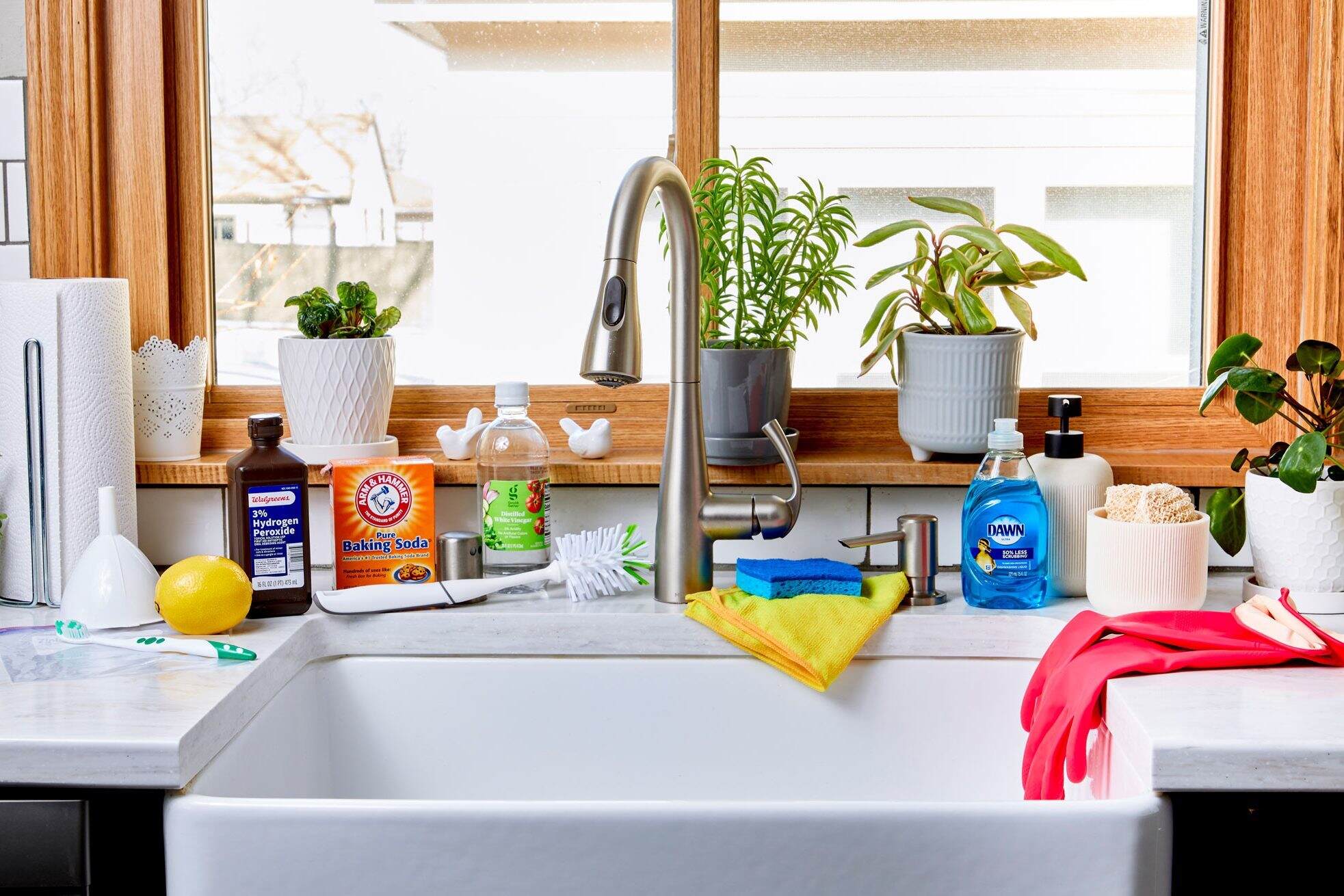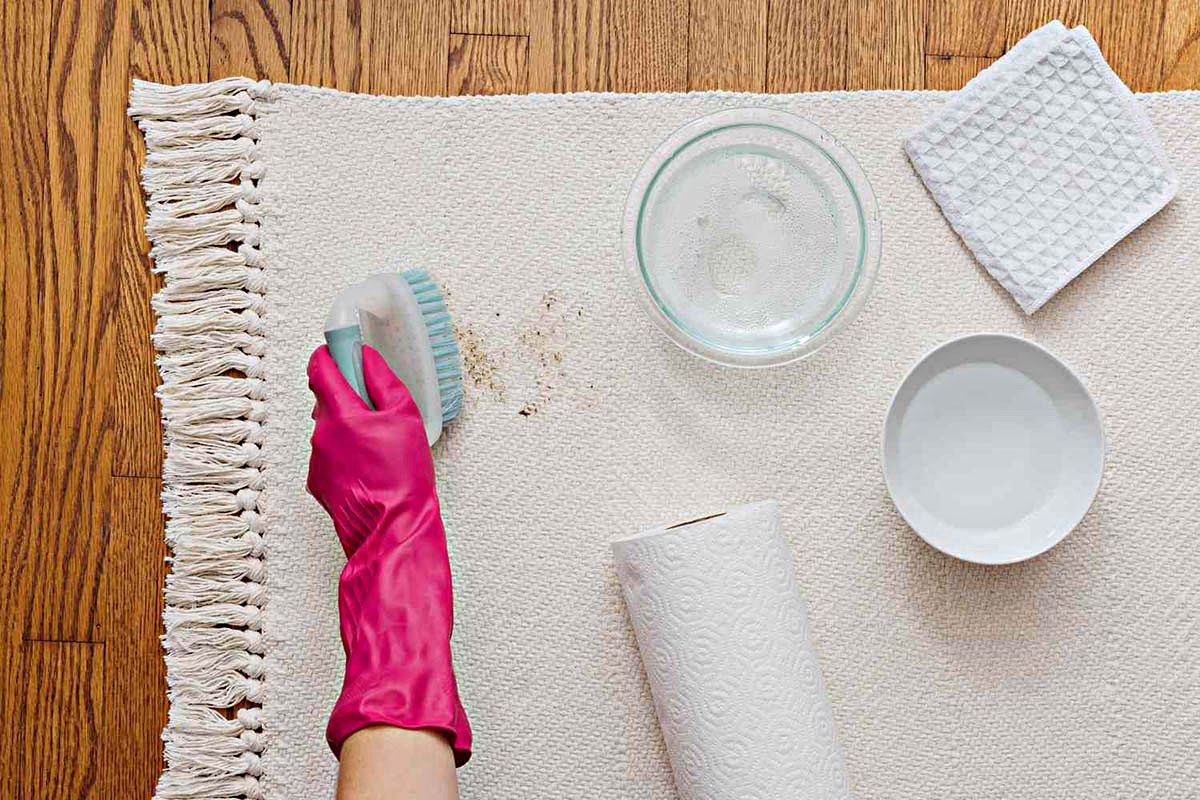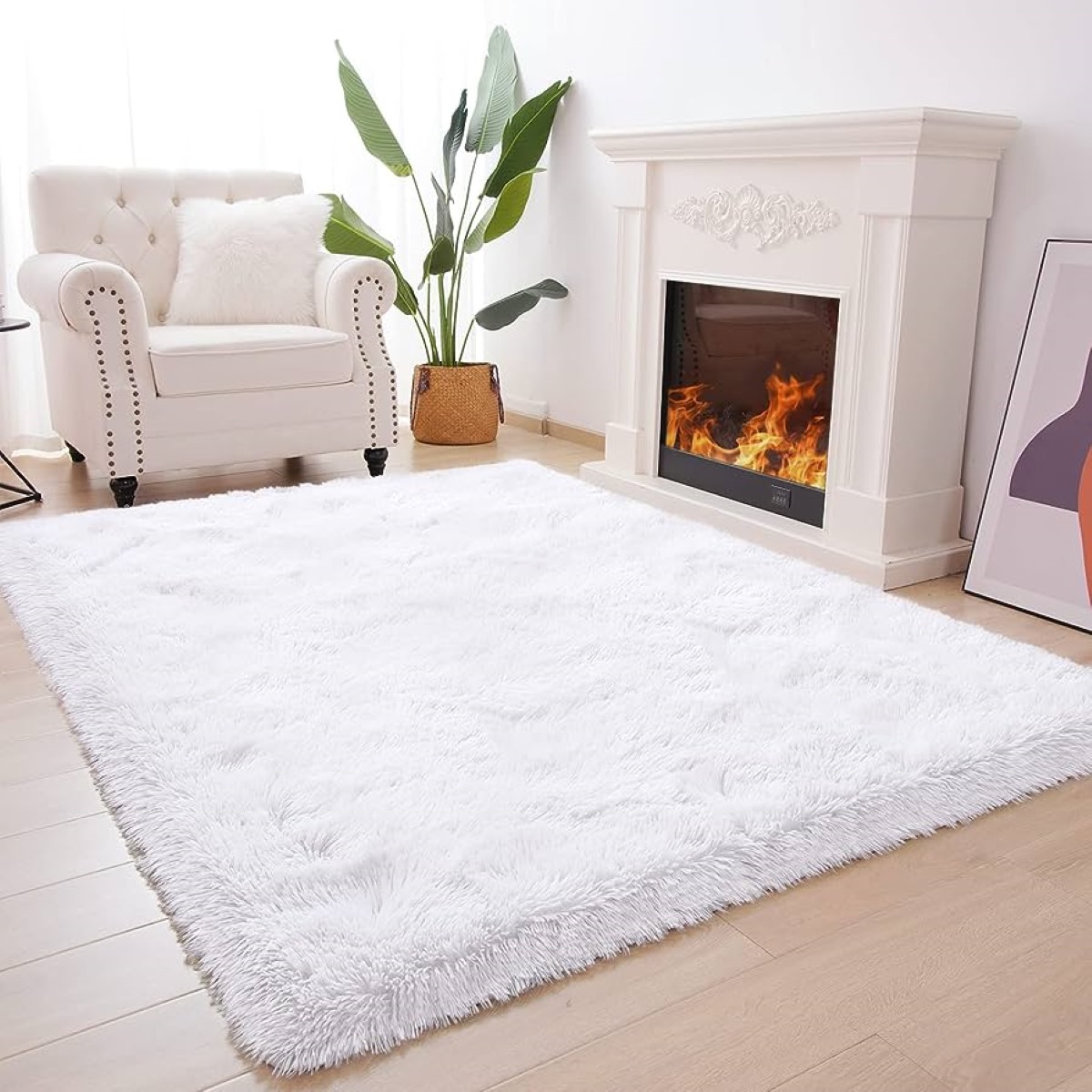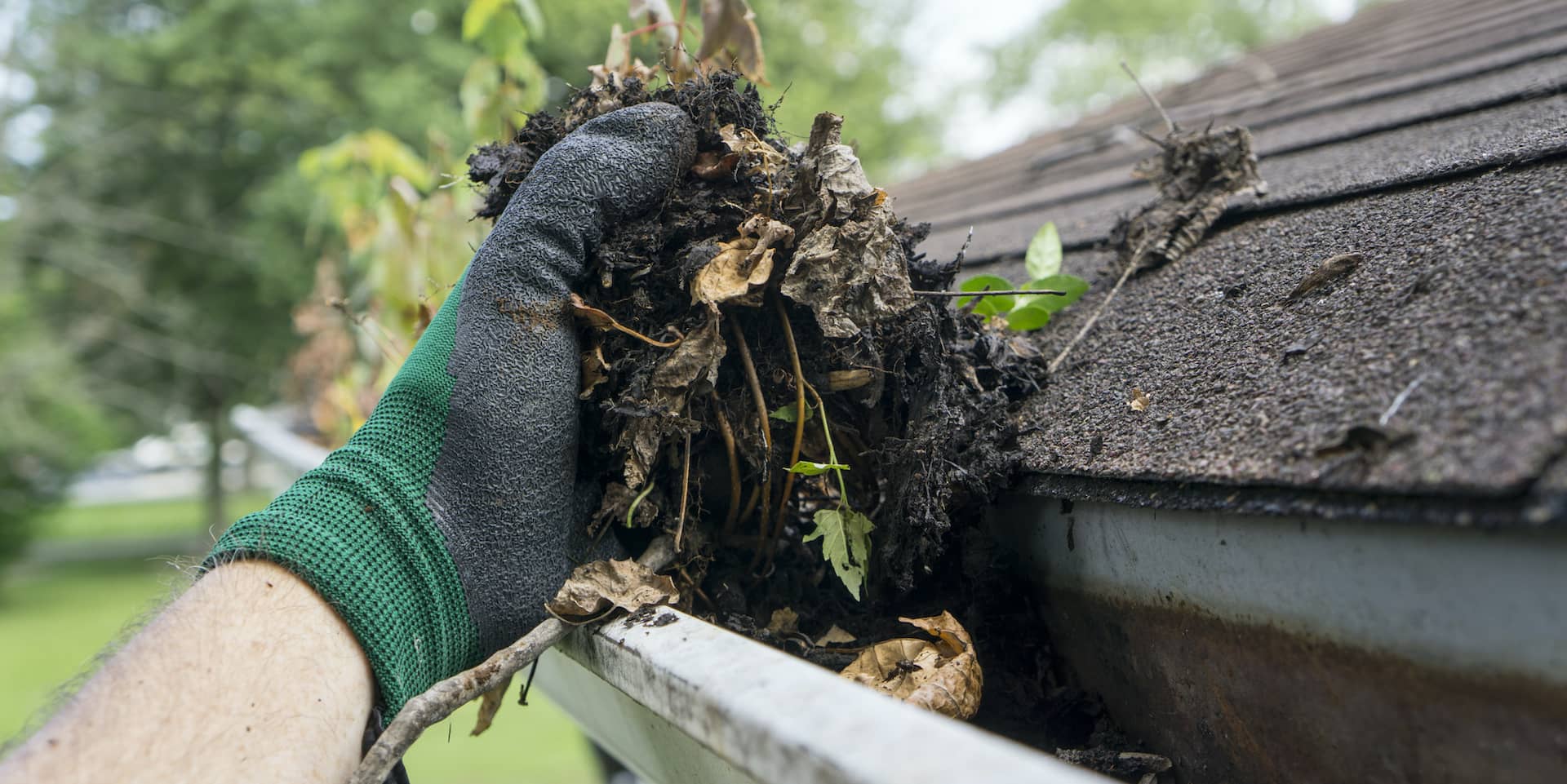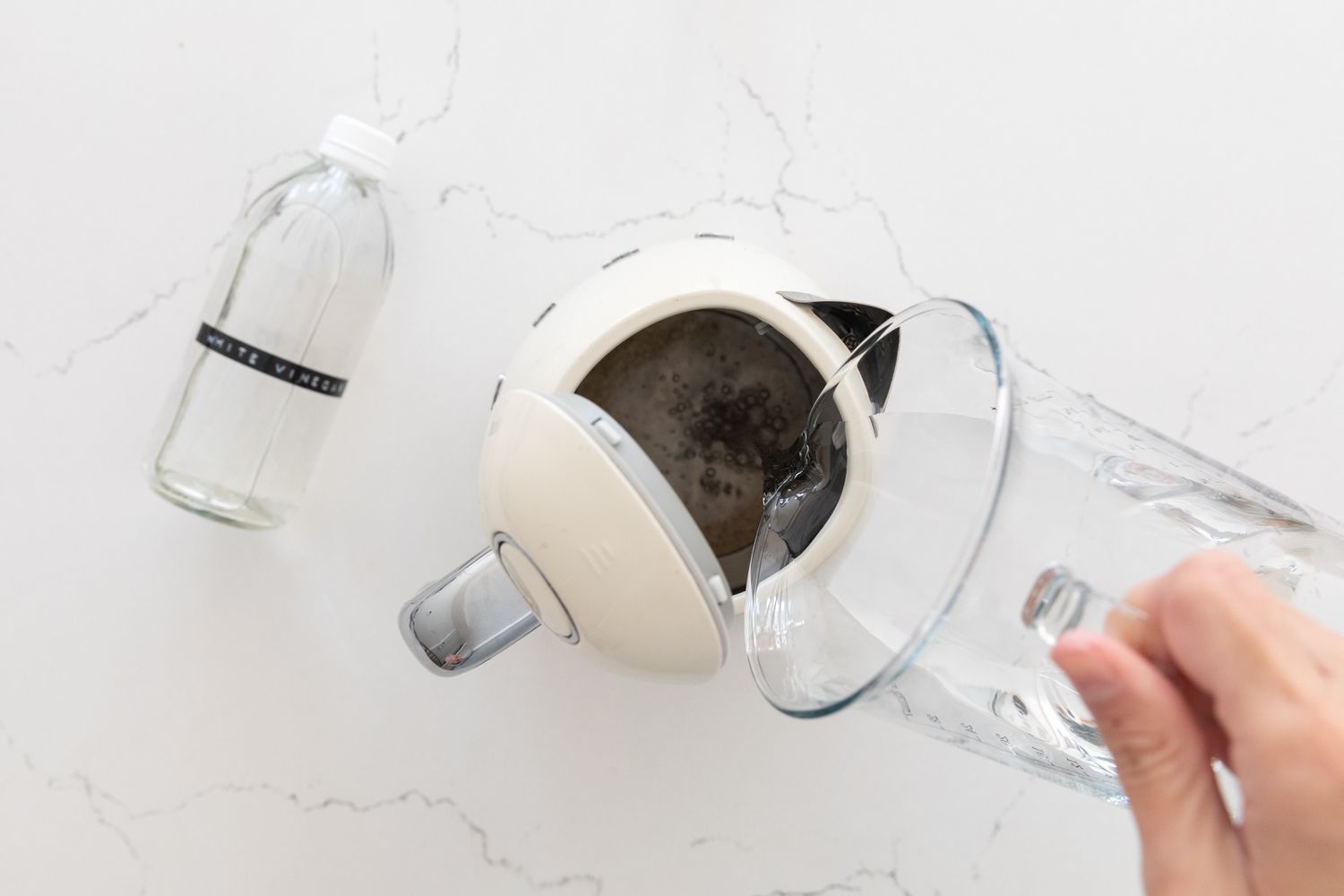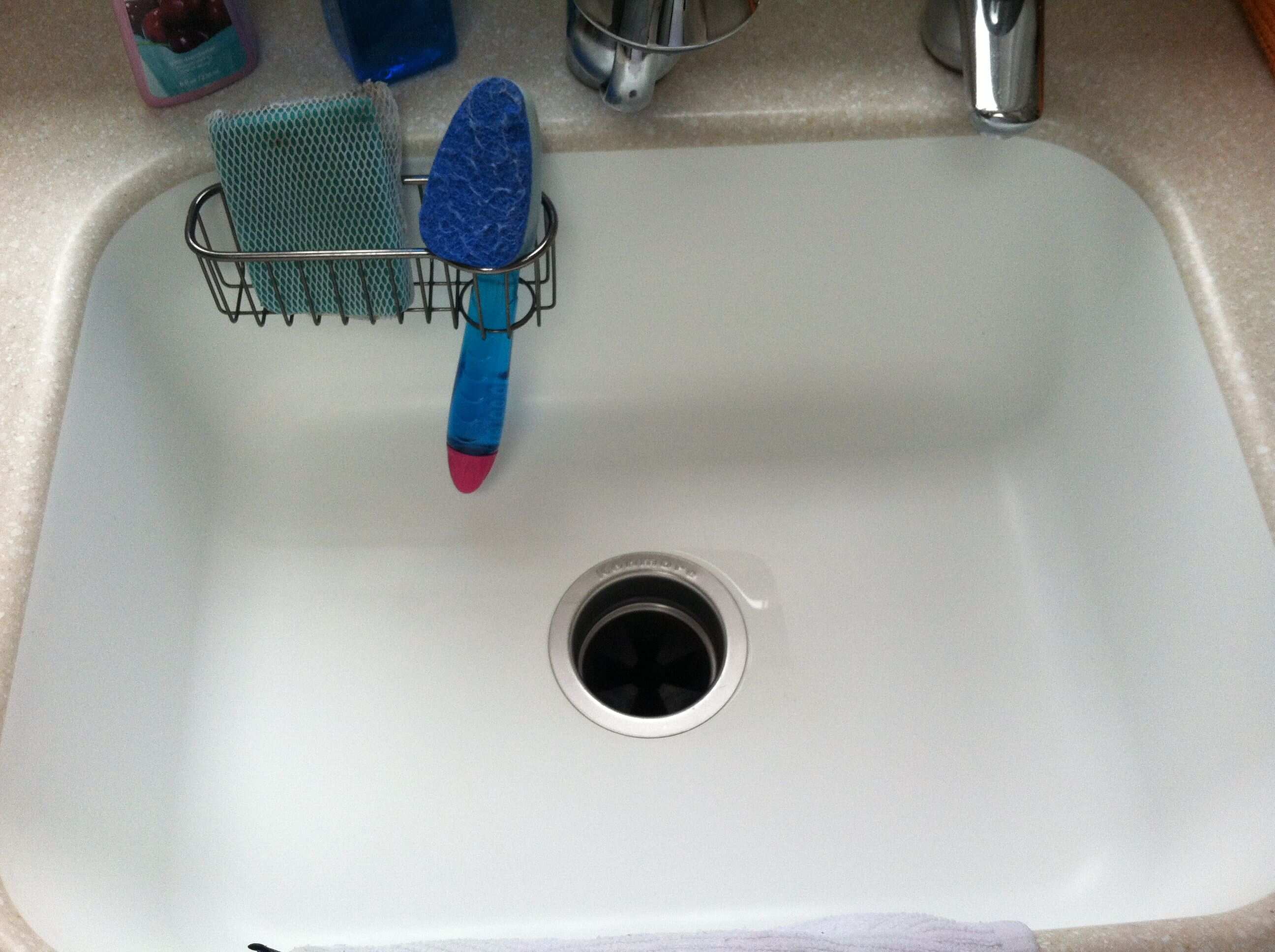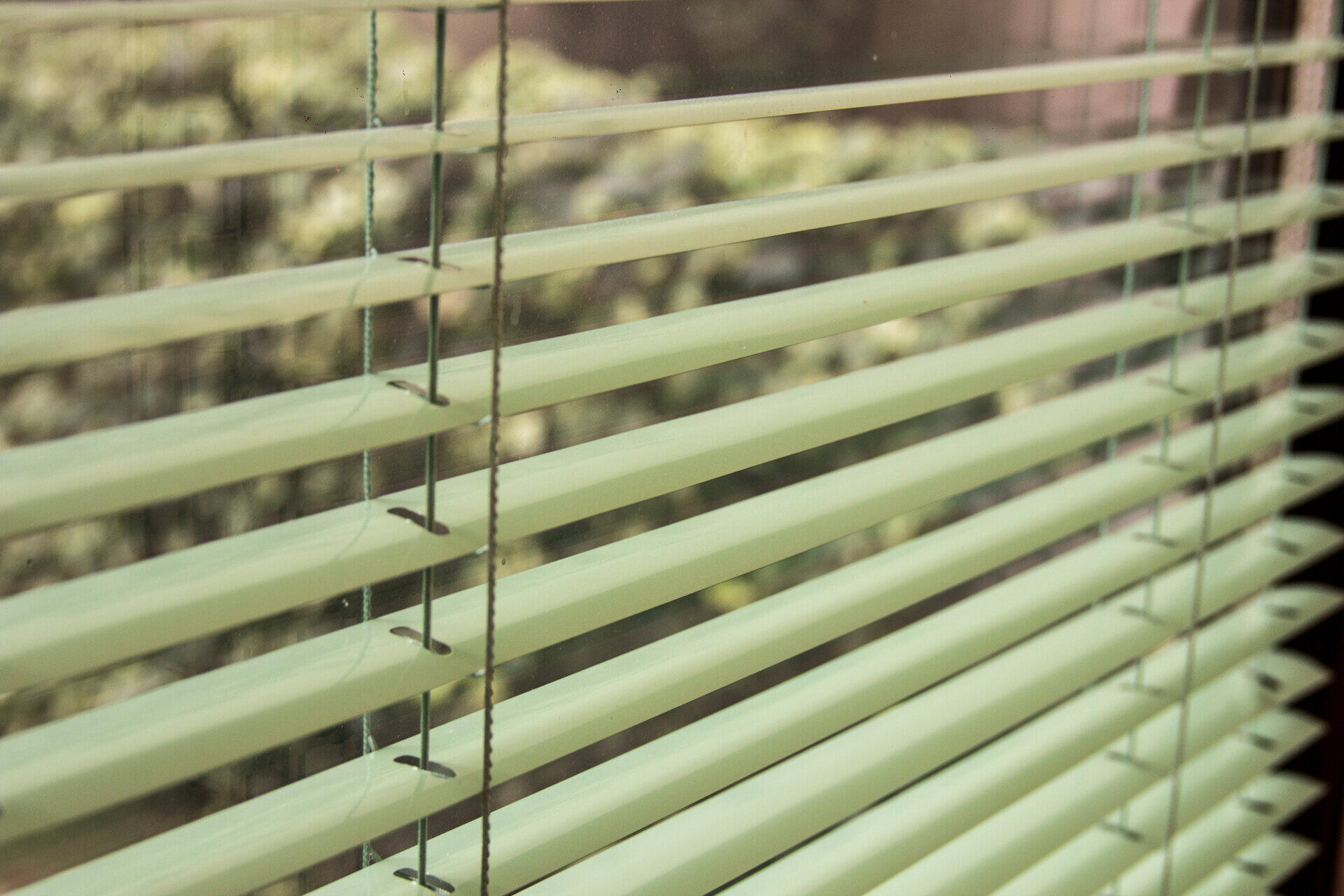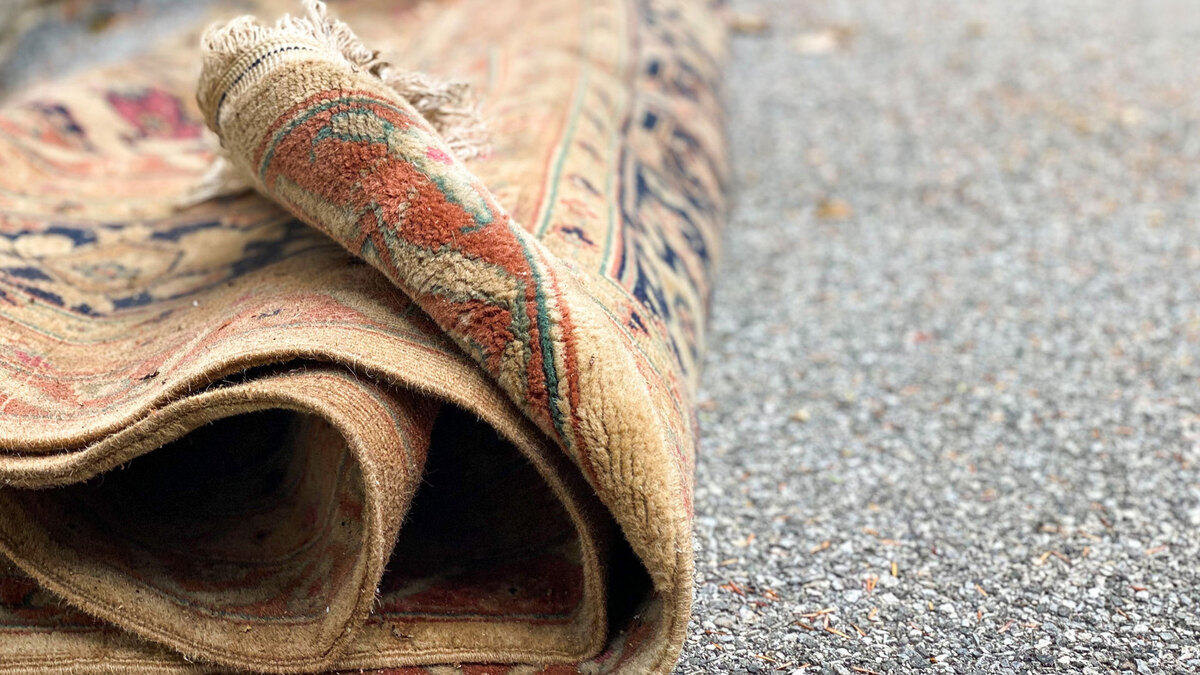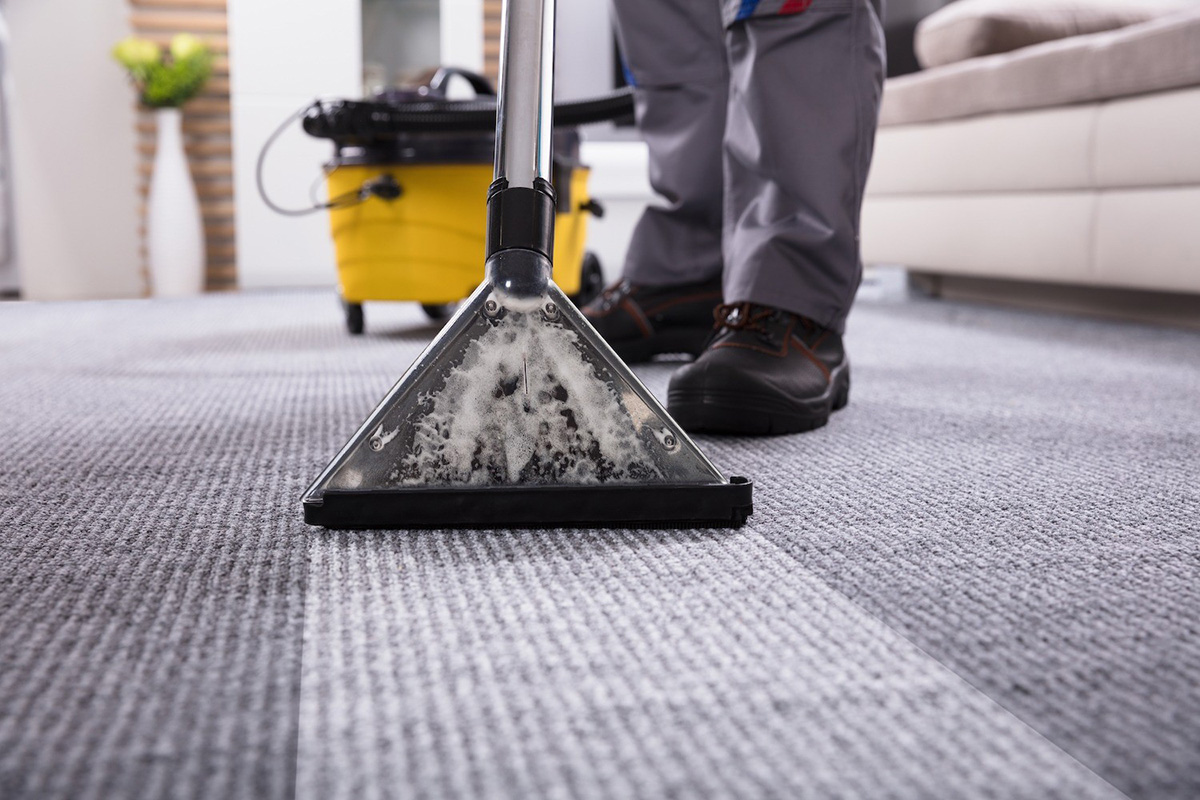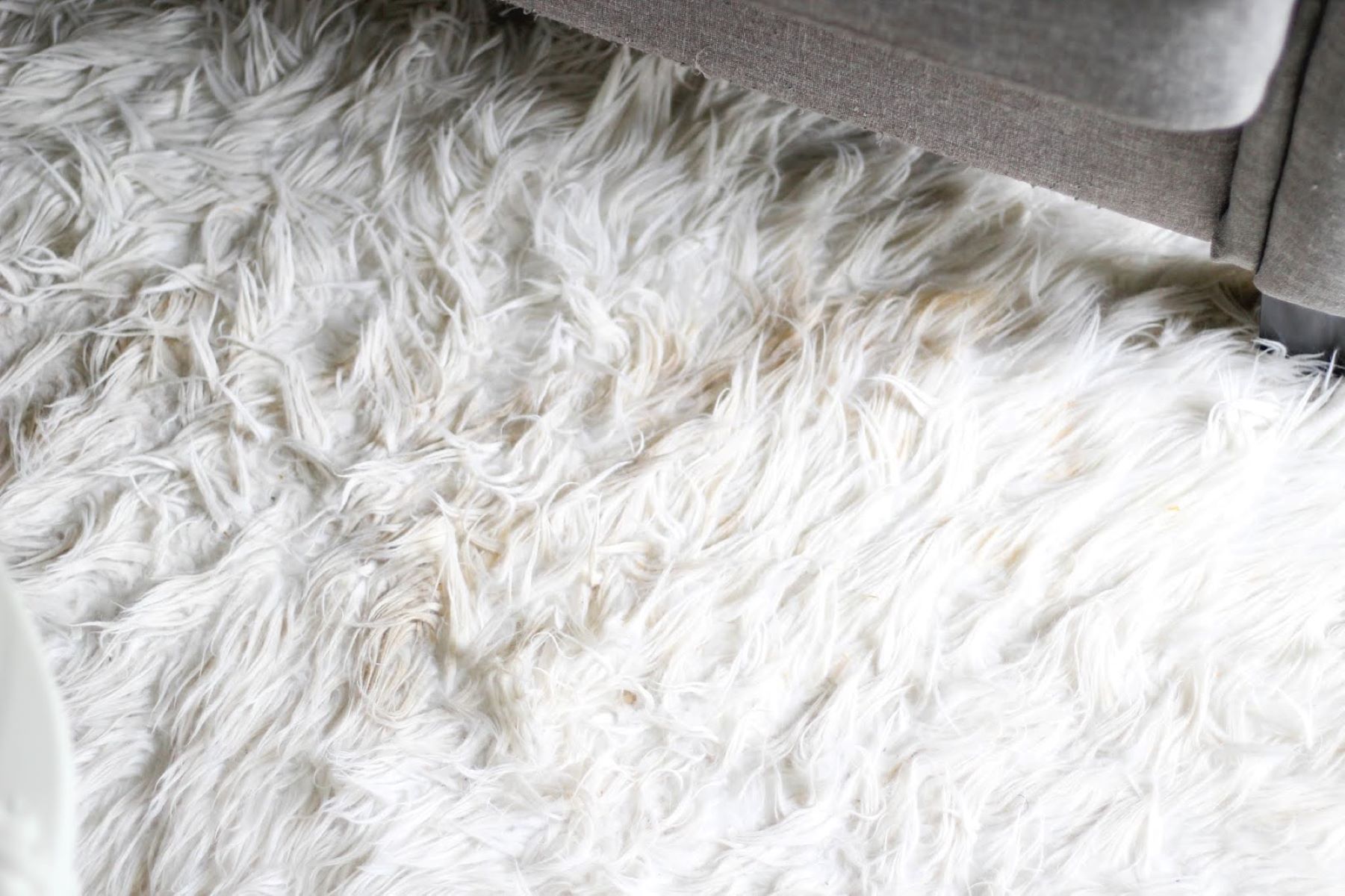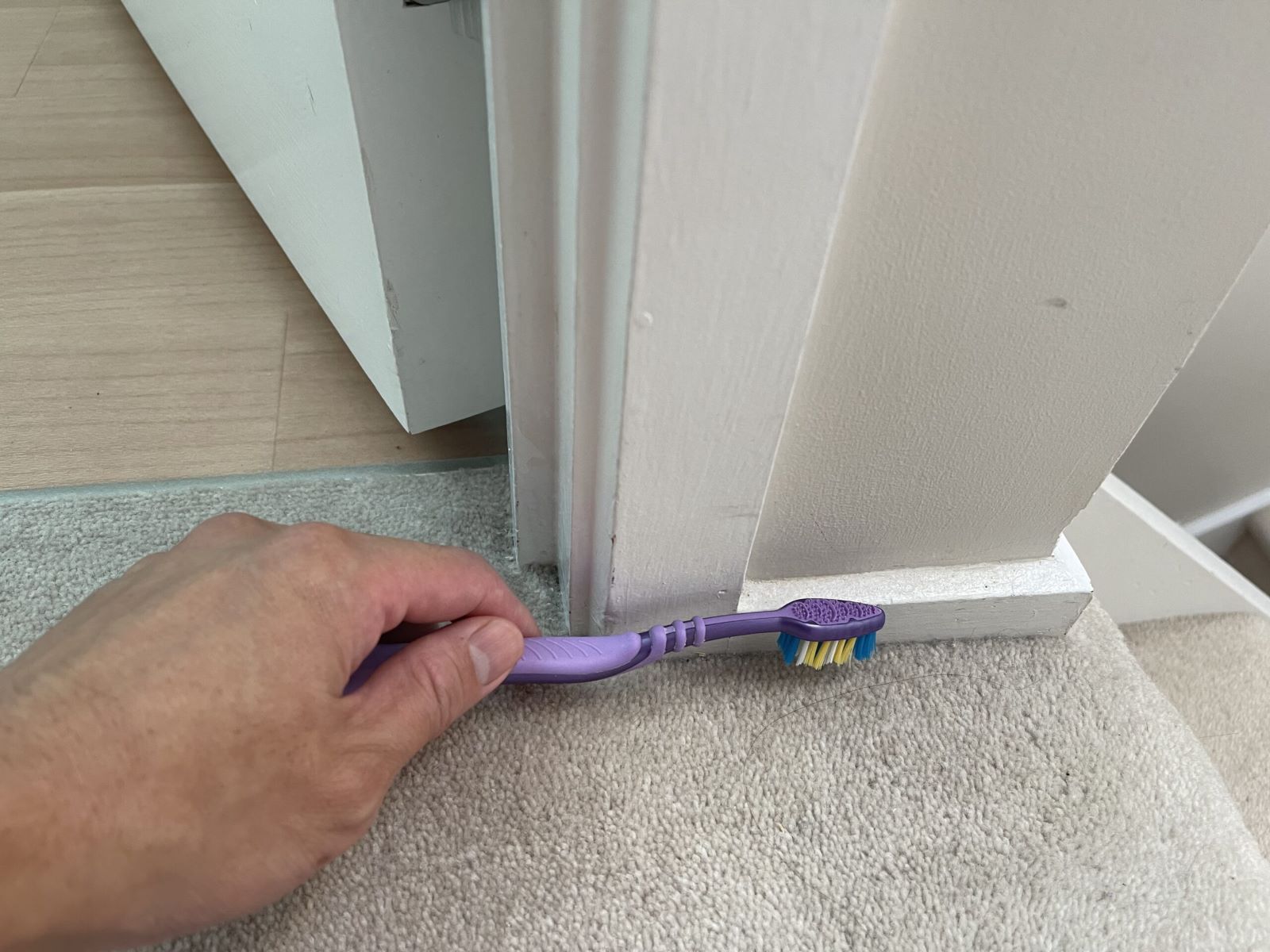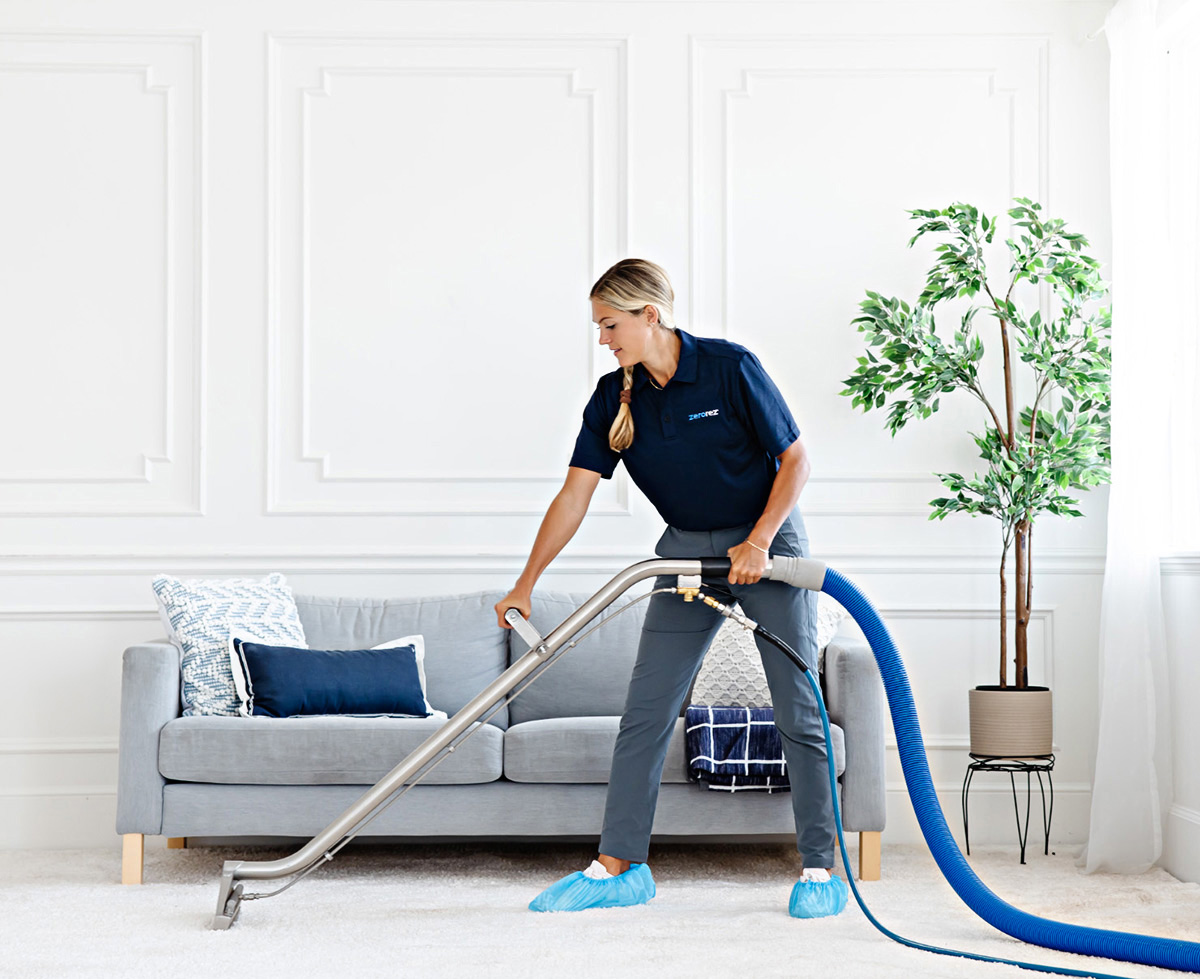

Articles
How To Clean A White Carpet
Modified: February 25, 2024
Learn effective methods and tips to clean your white carpet in this comprehensive article. Discover how to remove stains and maintain its pristine appearance.
(Many of the links in this article redirect to a specific reviewed product. Your purchase of these products through affiliate links helps to generate commission for Storables.com, at no extra cost. Learn more)
Introduction
Having a white carpet in your home can add a touch of elegance and sophistication to any room. However, it’s also a responsibility that requires regular cleaning and maintenance to keep it looking its best. White carpets are notoriously prone to stains and dirt, but with the right tools and techniques, you can keep your carpet looking fresh and pristine.
In this article, we will guide you through the step-by-step process of cleaning a white carpet, from gathering your cleaning supplies to effectively removing stains and maintaining its cleanliness. Whether you’re dealing with a small spot or tackling a larger area, this guide will help you achieve professional-level results.
So, let’s roll up our sleeves, put on our cleaning gloves, and get ready to bring back the sparkle to your white carpet!
Key Takeaways:
- Regular vacuuming, immediate spot treatment, and preventive measures are essential for maintaining a pristine white carpet. Consistency in care and cleaning will prevent stains and keep your carpet looking its best.
- Embracing the elegance of a white carpet requires proper care and maintenance. From gentle scrubbing to thorough rinsing, following the outlined steps will help you enjoy a spotless and vibrant white carpet for years to come.
Read more: How Do You Clean Carpet With White Vinegar?
Gather your cleaning supplies
Before you begin cleaning your white carpet, it’s essential to gather all the necessary supplies. Being prepared with the right tools and solutions will make your job easier and more efficient. Here’s a list of items you will need:
- Vacuum cleaner with attachments
- White absorbent towels or paper towels
- Mild carpet cleaner or white vinegar
- Baking soda
- Soft bristle brush
- Spray bottle
- Warm water
- Bucket
- Rubber gloves
- Fans or air circulator
A vacuum cleaner with attachments is crucial for removing loose dirt and debris from your carpet before you begin the cleaning process. Make sure you have a good supply of white absorbent towels or paper towels to blot up any excess moisture or stains that you’ll encounter during the cleaning process.
For the cleaning solution, you have a couple of options. You can either use a mild carpet cleaner specifically designed for white carpets or opt for a DIY solution using white vinegar. White vinegar is an effective and natural cleaner that helps remove stains and eliminates odors.
In addition to the carpet cleaner or white vinegar, you’ll also need some baking soda. Baking soda is a great natural deodorizer and can help lift stains and brighten your carpet. Along with the baking soda, a soft bristle brush will come in handy for gently scrubbing stains without damaging the carpet fibers.
Now that you have your cleaning solution and tools ready, it’s time to move on to the next step: vacuuming the carpet.
Vacuum the carpet
Before you start the actual cleaning process, it’s important to properly vacuum your white carpet to remove loose dirt, dust, and debris. This will ensure that the cleaning solution can work effectively and prevent any dirt particles from being pushed further into the carpet fibers during the cleaning process.
Start by removing any items from the carpeted area, such as furniture or toys, to allow for a thorough vacuuming. Attach the appropriate nozzle or attachment for carpets to your vacuum cleaner. This will help you reach all the nooks and crannies of your white carpet.
Begin by vacuuming the perimeter of the room, working your way inward. Use slow, steady strokes in both horizontal and vertical directions to ensure you cover the entire area. Pay extra attention to high-traffic areas and areas near entrances, as these tend to accumulate more dirt and debris.
If you encounter any visible stains or spills, try to gently vacuum over them to remove any loose particles. However, avoid vigorously scrubbing or using excessive force at this stage, as it may spread the stain or embed it deeper into the carpet fibers.
Continue vacuuming the entire carpeted area until no more dirt or debris is being picked up by the vacuum. Take your time and make multiple passes if necessary to ensure a thorough clean. Remember to also vacuum along the baseboards and corners of the room, as dirt tends to accumulate in these areas.
Once you’re satisfied with the vacuuming, it’s time to move on to the next step: preparing a cleaning solution for your white carpet.
Prepare a cleaning solution
Now that your white carpet has been thoroughly vacuumed, it’s time to prepare a cleaning solution that will effectively remove stains, dirt, and odors. You have a few options when it comes to choosing a cleaning solution for your carpet.
One option is to use a mild carpet cleaner that is specifically formulated for white carpets. These cleaners often contain enzymes or oxygen-based ingredients that help break down stains and brighten the carpet fibers. Follow the instructions on the cleaner’s packaging to ensure proper dilution and application.
If you prefer a more natural approach, white vinegar can be a great alternative cleaning solution. Vinegar is known for its cleaning and deodorizing properties, making it an excellent choice for tackling stains on your white carpet.
To create a vinegar cleaning solution, mix equal parts white vinegar and warm water in a spray bottle or a bucket. The warm water will help activate the cleaning properties of the vinegar. If the smell of vinegar is a concern, you can add a few drops of essential oil to mask the scent.
Regardless of which option you choose, it’s important to test the cleaning solution in a small, inconspicuous area of the carpet before applying it to the entire surface. This will help ensure that the solution doesn’t cause any discoloration or damage to the carpet fibers.
Once you’ve chosen and tested your cleaning solution, you’re ready to move on to the next step: applying the cleaning solution to the carpet.
Test the cleaning solution
Testing the cleaning solution is a crucial step before applying it to your entire white carpet. This step helps you determine if the solution is safe for your carpet and will not cause any discoloration or damage. Additionally, it allows you to assess the effectiveness of the solution in removing stains.
To test the cleaning solution, select a small, inconspicuous area of the carpet, such as a corner or under a piece of furniture. Apply a small amount of the solution to the test area, either by spraying it or using a clean cloth or sponge. Gently blot or rub the solution into the carpet fibers.
Observe the test area for any adverse reactions. Look for color bleeding, discoloration, or any changes in the texture of the carpet. If there are no negative effects, and the carpet appears unaffected, you can proceed with confidence. However, if you notice any issues, it’s best to discontinue using the tested solution and try an alternative method.
If the cleaning solution passes the test, it’s time to move on to the next step: applying the solution to the stains on your white carpet. Remember to use caution and moderation when applying the solution to avoid oversaturation or excessive scrubbing, which can potentially damage the carpet fibers.
In the next section, we will guide you on effectively applying the cleaning solution and removing stains from your white carpet.
Read more: How To Get Carpet White Again
Apply the cleaning solution to the carpet
With the testing phase successfully completed, it’s time to apply the cleaning solution to the stains and spots on your white carpet. This step will help break down and lift the stains, restoring the carpet’s pristine appearance.
If you are using a commercial carpet cleaner, follow the instructions provided on the packaging. Typically, you will need to dilute the cleaner with water according to the recommended ratio. Apply the diluted solution to a clean cloth or sponge and gently dab it onto the stained area. Avoid saturating the carpet by using a minimal amount of solution.
If you have opted for the white vinegar cleaning solution, pour the mixture into a spray bottle. Spray a small amount of the solution onto the stained area of the carpet. Again, use a gentle dabbing motion with a clean cloth or sponge to work the solution into the fibers.
Regardless of the cleaning solution you are using, it’s important to work from the outside of the stain towards the center. This helps prevent the stain from spreading and becoming larger. Be patient and avoid rubbing or scrubbing vigorously, as this can damage the carpet fibers.
Continue applying the cleaning solution to all visible stains and spots on the white carpet. Take your time and be thorough, ensuring that each stain is adequately treated. If the stains are particularly stubborn, you may need to let the cleaning solution sit on the carpet for a few minutes to allow it to penetrate and work its magic.
Once you have applied the cleaning solution to all the stains, it’s time to move on to the next step: gently scrubbing the carpet to further loosen the stains.
Gently scrub the carpet
After applying the cleaning solution to the stains on your white carpet, it’s time to gently scrub the affected areas. Scrubbing helps to loosen the stain and lift dirt and debris from the carpet fibers. However, it’s essential to approach this step with care to avoid damaging the carpet.
First, dampen a soft-bristle brush or a clean, white cloth with the cleaning solution. Make sure the brush or cloth is damp and not soaking wet. Starting from the outside of the stain, gently scrub the affected area in a circular or back-and-forth motion. Avoid using excessive force or aggressive scrubbing, as this can fray or damage the carpet fibers.
Continue scrubbing each stain individually, focusing on one area at a time. Take breaks if necessary to assess the progress and prevent fatigue. Be patient and thorough, ensuring that you cover the entire stained area.
If you come across particularly stubborn stains, consider using a bit of baking soda to enhance the cleaning process. Sprinkle a small amount of baking soda directly onto the stain and let it sit for a few minutes to absorb odors and lift the stain. Then, resume scrubbing with the soft-bristle brush or cloth.
Remember to work in small sections and never oversaturate the carpet. If you notice that the carpet is becoming too wet or that the cleaning solution is starting to dry, pause and reapply a small amount of the cleaning solution to the affected area.
Once you have gently scrubbed all the stained areas, it’s time to move on to the next step: rinsing the carpet to remove any residual cleaning solution.
Use a mixture of warm water and mild dish soap to spot clean stains on a white carpet. Blot the stain gently with a clean cloth and avoid rubbing to prevent spreading the stain.
Rinse the carpet
After you have finished gently scrubbing the stains on your white carpet, it’s important to thoroughly rinse the carpet to remove any remaining cleaning solution. Rinsing helps to ensure that no residue is left behind, which can attract dirt and make the carpet appear dull or sticky.
To begin the rinsing process, fill a bucket with clean, warm water. You can also use a spray bottle filled with water for more targeted rinsing. Dip a clean sponge or cloth into the water and wring it out so that it is damp but not dripping.
Starting from the outside of the stained area, gently blot and rinse the carpet with the damp sponge or cloth. Work your way towards the center of the stain, repeating this process until you have covered the entire stained area.
It’s important to use a gentle blotting motion and avoid rubbing or scrubbing the carpet. Excessive rubbing can damage the carpet fibers and potentially spread the stain. Instead, focus on lightly dabbing and rinsing the carpet to remove the cleaning solution residue.
If you are using a spray bottle, simply spray a mist of water onto the stained area and then blot with a clean cloth or sponge. Continue this process until you have thoroughly rinsed the carpet.
Be sure to change the water in the bucket or refill the spray bottle with clean water as needed. This ensures that you are always working with fresh, clean water for rinsing.
Continue rinsing the carpet until you no longer see any traces of the cleaning solution on the sponge, cloth, or in the water. This may require multiple rounds of rinsing, depending on the size and severity of the stains.
Once you have completed the rinsing process, it’s time to remove any excess moisture from the carpet. This will help facilitate the drying process and prevent any potential damage from prolonged exposure to moisture.
Remove excess moisture
After rinsing your white carpet, it’s important to remove any excess moisture to prevent prolonged dampness and potential damage to the carpet fibers. Removing excess moisture will also help speed up the drying process, allowing you to enjoy your freshly cleaned carpet sooner.
The first step in removing excess moisture is to blot the carpet with clean, absorbent towels or paper towels. Place the towels on the wet areas of the carpet and gently press down to absorb the water. Avoid rubbing or scrubbing, as this can spread the moisture and potentially damage the carpet fibers.
Continue blotting with fresh towels until you have absorbed as much moisture as possible. You may need to repeat this process with multiple towels, depending on the size of the damp areas.
If you have access to a wet/dry vacuum cleaner, you can also use it to extract excess moisture from the carpet. Ensure that the vacuum cleaner is set to the appropriate setting for wet cleaning. Slowly and methodically vacuum over the damp areas, allowing the machine to extract the water.
In addition to blotting and using a wet/dry vacuum, you can also make use of a handheld fan or an air circulator to promote air circulation and assist in drying the carpet. Position the fan or air circulator near the damp areas and let it run for several hours. This will help evaporate the remaining moisture and speed up the drying process.
While removing excess moisture, it’s important to avoid walking on the wet carpet to prevent further damage and potential stains. If necessary, place some towels or rugs on the damp areas to provide a barrier and protect the carpet.
Now that you’ve successfully removed excess moisture, it’s time to allow your white carpet to fully dry. This is an important step in the cleaning process to ensure the best possible results.
Read more: How To Clean White Tablecloths
Allow the carpet to dry
After removing excess moisture from your white carpet, it’s crucial to allow it to dry completely. Proper drying ensures that the carpet returns to its pristine condition and minimizes the risk of mold or mildew growth.
First and foremost, ensure that the area where the carpet is located is well-ventilated. Open windows and doors to allow fresh air to circulate. If possible, use fans or air circulators to increase airflow in the room. This will help facilitate the drying process.
Avoid walking on the carpet while it’s still damp, as this can not only prolong the drying time but also lead to potential damage. If you need to access the carpeted area, lay down clean, dry towels or use rugs to create a path that you can walk on.
The drying time can vary depending on factors such as the carpet thickness, humidity levels, and airflow in the room. In general, it may take anywhere between a few hours to a day or two for the carpet to fully dry. Be patient and allow sufficient time for the carpet to dry completely before resuming normal foot traffic.
To check if the carpet is dry, gently touch the carpet fibers with the back of your hand. If they feel cool or damp, it’s an indication that the carpet is still drying. If the fibers feel dry and warm to the touch, it’s likely that the carpet is dry and ready to be used again.
Once the carpet is fully dry, it’s important to thoroughly vacuum it to fluff up the fibers and remove any residual dirt or debris. Use a vacuum cleaner with good suction power and go over the entire carpeted area, making multiple passes in different directions.
Now that your white carpet is clean and dry, it’s time to take some preventive measures to maintain its pristine appearance and keep it looking its best.
Vacuum the carpet once it is dry
Once your white carpet is completely dry, it’s important to give it a thorough vacuuming to remove any remaining dirt, dust, or debris. Vacuuming not only helps maintain a clean and fresh appearance but also prolongs the life of your carpet by preventing buildup and matting of the fibers.
Before you begin vacuuming, ensure that the vacuum cleaner’s dustbin or bag is empty or has enough space to collect the dirt and debris. Attach the appropriate nozzle or attachment for carpet cleaning, such as a rotating brush or beater bar.
Start by vacuuming the perimeter of the room, working your way towards the center. Use slow, overlapping strokes in both vertical and horizontal directions to ensure thorough coverage. Pay special attention to high-traffic areas, as they tend to accumulate more dirt and debris.
When vacuuming, be sure to move the vacuum cleaner at a steady pace to allow the suction and brushes to effectively loosen and lift the dirt from the carpet fibers. Take your time and make multiple passes if necessary, especially over heavily soiled areas or areas with stubborn debris.
For optimal results, consider using a vacuum cleaner with HEPA (High-Efficiency Particulate Air) filtration. HEPA filters are designed to capture even the smallest particles, such as pollen, pet dander, and dust mites, ensuring a thorough and allergen-free cleaning.
In addition to regular vacuuming, it’s a good idea to periodically deep clean your white carpet to remove deeper stains and embedded dirt. Deep cleaning can be done using a carpet cleaner or by hiring a professional carpet cleaning service. This deep cleaning process helps refresh and revive the carpet fibers, restoring its original luster.
By vacuuming your white carpet regularly, you will ensure that it remains clean, fresh, and looking its best for years to come.
Tips for maintaining a white carpet
Keeping a white carpet looking clean and beautiful requires ongoing maintenance and care. Here are some essential tips to help you maintain the pristine appearance of your white carpet:
- Regular vacuuming: Vacuum your white carpet at least once a week, or more frequently in high-traffic areas. This helps remove dirt, dust, and debris before they have a chance to settle into the fibers.
- Immediate spot treatment: Attend to spills and stains promptly by blotting them with a clean cloth or paper towel. Avoid rubbing the stain, as this can push it deeper into the carpet. Use a mild cleaning solution or white vinegar to gently treat the stain if necessary.
- Preventive measures: Use doormats or rugs in entryways and high-traffic areas to reduce the amount of dirt and debris that get tracked onto your white carpet. Encourage family members and guests to remove their shoes before stepping onto the carpet.
- Regular deep cleaning: Schedule regular deep cleaning sessions for your white carpet. This can be done using a carpet cleaner or by hiring a professional cleaning service. Deep cleaning helps remove embedded dirt, stains, and odors, keeping your carpet fresh and revitalized.
- Avoid harsh chemicals: When cleaning your white carpet, avoid using harsh chemicals or cleaners that may damage or discolor the fibers. Stick to mild carpet cleaners or natural solutions like white vinegar and baking soda.
- Protect from sunlight: Direct sunlight can cause your white carpet to fade over time. Use curtains, blinds, or window films to protect your carpet from prolonged exposure to the sun’s rays. Rearranging furniture periodically can also help prevent uneven fading.
- Regular professional cleaning: For deep-seated stains or heavily soiled white carpets, consider hiring a professional carpet cleaning service. They have specialized equipment and expertise to effectively clean and rejuvenate your carpet.
- Fluff up the fibers: Use a soft-bristle brush or a carpet rake to gently fluff up the fibers of your white carpet. This helps maintain its plush appearance and prevents matting or compression.
- Stain-resistant treatments: Consider applying a stain-resistant treatment to your white carpet. These treatments create a protective barrier that can make cleaning up spills and stains easier.
- Regular maintenance: Apart from regular cleaning, it’s important to inspect your white carpet regularly for any signs of damage, such as loose threads or fraying. Address these issues promptly to prevent further damage.
By following these tips and being proactive in the care of your white carpet, you can enjoy its beauty and elegance for years to come.
Conclusion
Cleaning and maintaining a white carpet requires a bit of effort, but the results are well worth it. With the right tools, techniques, and ongoing care, you can keep your white carpet looking fresh, clean, and beautiful.
In this article, we’ve covered the step-by-step process of cleaning a white carpet, from gathering your cleaning supplies to vacuuming, preparing a cleaning solution, testing it, applying it to the carpet, gently scrubbing, rinsing, removing excess moisture, and allowing the carpet to dry. We’ve also provided valuable tips for maintaining a white carpet, including regular vacuuming, immediate spot treatment, preventive measures, regular deep cleaning, avoiding harsh chemicals, protecting from sunlight, professional cleaning, fluffing up the fibers, applying stain-resistant treatments, and regular maintenance.
Remember that consistency is key when it comes to maintaining a white carpet. Regular care and cleaning will help prevent stains and keep your carpet looking its best. By following the tips and techniques outlined in this article, you can enjoy a spotless and vibrant white carpet for years to come.
So, don’t be afraid to embrace the elegance of a white carpet. With proper care and maintenance, it can truly transform your space and create a sophisticated atmosphere.
Now, it’s time to put your newfound knowledge into action and bring back the beauty and allure to your white carpet!
Frequently Asked Questions about How To Clean A White Carpet
Was this page helpful?
At Storables.com, we guarantee accurate and reliable information. Our content, validated by Expert Board Contributors, is crafted following stringent Editorial Policies. We're committed to providing you with well-researched, expert-backed insights for all your informational needs.
